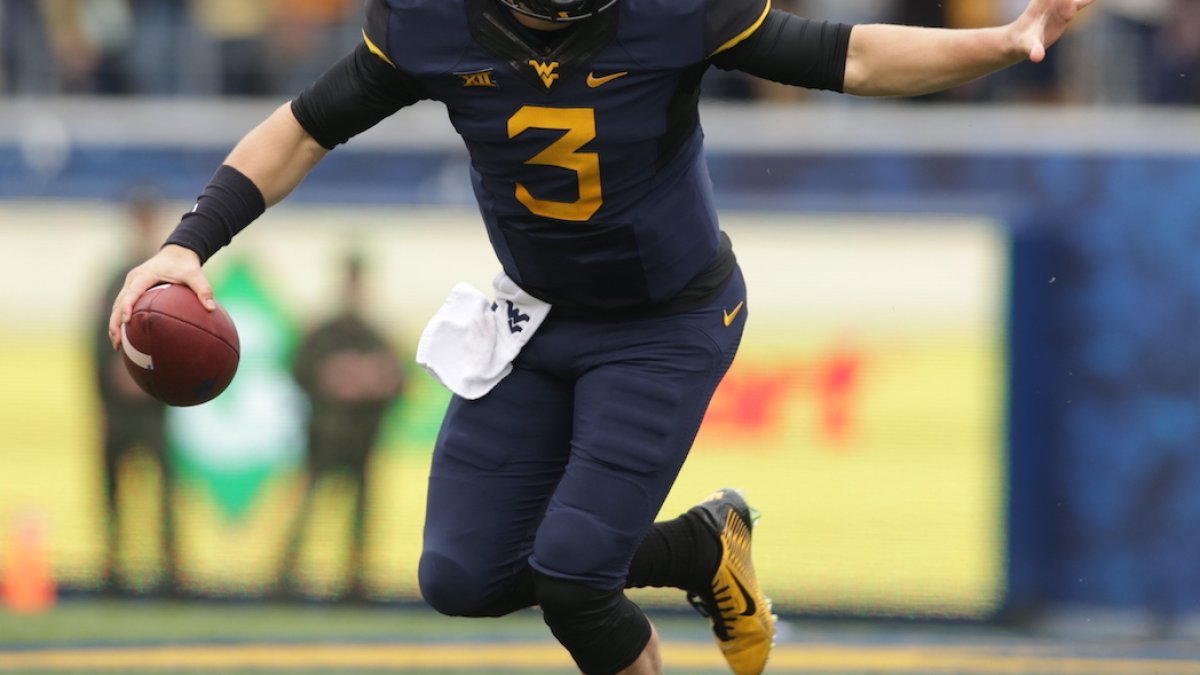The 2016 season looks set to be pivotal for Dana Holgorsen’s West Virginia tenure. When Holgorsen replaced the late Bill Stewart as head coach in 2011, big things were expected. Stewart had led the Mountaineers to three consecutive 9-4 seasons, and Holgorsen initially helped them go one better, with a 10-3 2011 season which culminated with the Mountaineers offense running rampant in an Orange-Bowl thrashing of Clemson. However, since then West Virginia has gone 26-25, which leaves Holgorsen in a precarious position.
West Virginia finished 2015 with an 8-5 record, which could have been much worse given they entered November with just three wins. That 3-4 record wasn’t flattering, but it was understandable given their murderous October schedule. Over a four-week span they faced the best the Big 12 had to offer, starting with Oklahoma, then on to Oklahoma State, Baylor and TCU. Three of those games were on the road and the Mountaineers lost their star defensive player (safety Karl Joseph) for the season in the game against Oklahoma. Joseph had been in stellar form with five interceptions in four games, losing him was a cruel blow.
Somewhat surprisingly for a Holgorsen team, it was West Virginia’s defense that was the stronger unit in 2015, but they have lost key players at each level of the defense. On the defensive line NT Kyle Rose (+26.5) has left, at linebacker it’s ILB Nick Kwiatkowski (+29.8) and OLB Shaq Petteway (+10.8), and in the secondary cornerback Daryl Worley (+10.9) and Joseph (+12.3) are both gone.
Overall, the players West Virginia lost accounted for 60.8 percent of their defensive snaps, 62.9 percent of their generated pressure and 63.9 percent of their defensive stops. They will rebuild of course, but that’s a lot of experience and production to replace, which puts the onus on the offense to step up in 2016.
Holgorsen made his name as a coordinator of prolific offenses which usually featured star players with fantastic stat lines. At Texas Tech that was QB Graham Harrell and WR Michael Crabtree; it was QB Case Keenum at Houston; QB Brandon Weeden and WR Justin Blackmon starred at Oklahoma State, and Holgorsen had QB Geno Smith and WRs Tavon Austin and Stedman Bailey in his first two seasons with West Virginia. The question is — does this West Virginia team have players that can step up in the same way?
The offensive line features two of the Big 12’s top returning offensive linemen in center Tyler Orlovsky and right guard Kyle Bosch, while the running game will be spearheaded by former big-name Pitt recruit Rushel Shell and should be fine. However, the line and ground attack were both solid in 2015, so the key will be for Holdorsen to get more out of the passing game this season.
Quarterback Skyler Howard’s +11.3 overall grade looks solid enough, but much of that positive grade is the result of his rushing, with only +2.5 coming from his passing grade. The big plays were there — Howard had 23 passes that earned grades of +1 or greater, which tied for 24th-most in the nation. But he also missed a lot — his +65.2 adjusted accuracy percentage ranked 75th out of 92 returning QBs who qualify, and his 34.0 percent accuracy on deep passes (passes that travel 20+ yards downfield in the air) ranked 65 out of 87. Howard made 97 deep pass attempts in 2015 — the second-most in the FBS — so given how often the Mountaineers went deep, Howard’s inaccuracy limited the explosive potential of this offense, and is the area where he most needs to improve.
The story is similar at wide receiver, where the Mountaineers have some explosive athletes whose hands let them down in 2015. The four leading returning options are Daikiel Shorts Jr., Shelton Gibson, Ka’Raun White and, assuming he is eligible to play, Jovon Durante. Between them they dropped 22 catchable passes in 2015, for a combined drop rate of 15.4, which simply means that they dropped 15.4 percent of catchable passes — deep threats Durante and Gibson the main offenders.
Operating primarily from the slot, Shorts earned a +9.9 receiving grade on 45 receptions, both team-leading marks. He should once again be Howard’s most reliable target. Even with the drops, Gibson was the team’s best deep-threat receiver in 2015. He averaged a team-leading 2.52 yards per route run, and a terrific 24.0 yards per catch. Gibson was targeted with 34 deep passes, and while he may only have caught 11 of them (with three drops), he turned those 11 receptions into 462 yards and five touchdowns. Durante struggled as a true freshman in 2015 and missed Spring practice, which may pave the way to a larger role for White. White only caught 15 passes in limited action in 2015, but he averaged 2.27 yards per route run, which would have been the second-best mark on the team if he’d played enough to qualify.
West Virginia has a talented offense with elite speed at receiver, but a combination of inaccurate passing and inconsistent catching limited the big-play threat in 2015. If either or both of those things improve in 2016 — and that’s a big if — then the Mountaineers offense may just be good enough to mount a stronger challenge for the Big 12.



 © 2024 PFF - all rights reserved.
© 2024 PFF - all rights reserved.